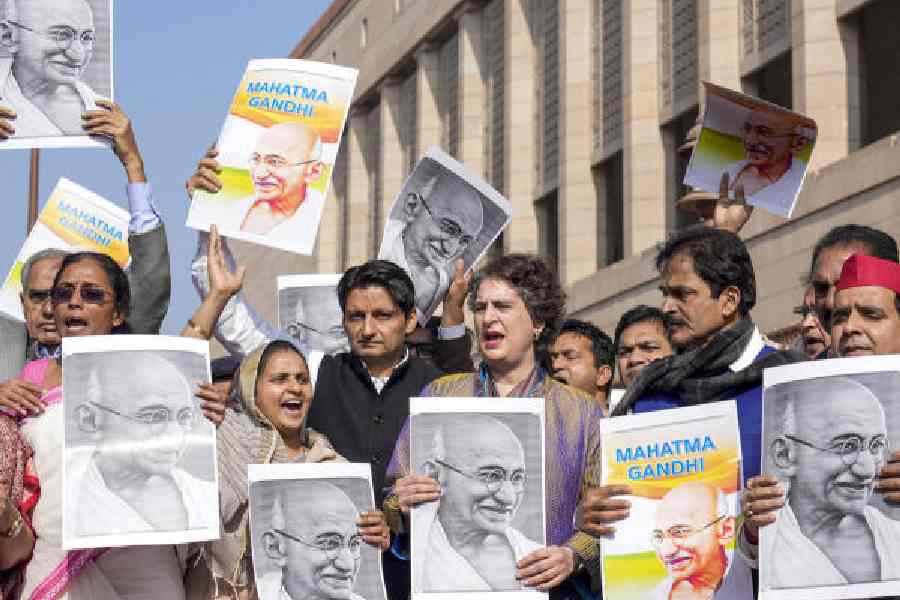A global coronavirus surge that is driven by the devastation in India continues to break daily records and run rampant in much of the world, even as vaccinations steadily ramp up in wealthy countries and more than one billion shots have now been given globally.
On Sunday, the world’s seven-day average of new cases hit 774,404, according to a New York Times database. That is a jump of 15 per cent from two weeks earlier, and higher than the peak average of 740,390 during the last global surge in January.
Despite the number of shots given around the world — more than one billion, according to a New York Times tracker — far from enough of the world’s estimated population of nearly eight billion have been vaccinated to slow the virus’s steady spread.
And vaccinations have been highly concentrated in wealthy nations: 82 per cent of shots worldwide have been given in high- and upper-middle-income countries, according to data compiled by the Our World in Data project at the University of Oxford. Only 0.2 per cent of doses have been administered in low-income countries.
Israel is far ahead of much of the world in vaccinations: More than half of the population is now fully vaccinated. In Britain, where a highly contagious and deadly variant was discovered, nearly two thirds of the population is at least partly vaccinated and the rate of new cases is now among the lowest in Europe.
The US has also partly vaccinated about 41 per cent of its population and has loosened a ban on the export of raw materials for vaccines to help India control the world’s worst outbreak.
India is recording more than a third of all new global cases each day, averaging more than 260,000 new daily cases over the past week. The country’s sudden surge, driven by the spread of a newer variant, is casting increasing doubt on the official death toll of nearly 200,000, with more than 2,000 people dying every day.
Experts say the official numbers, however staggering, represent just a part of the virus’s spread, with hospitals overwhelmed and lacking critical supplies like oxygen.
India is home to the Serum Institute of India, the world’s largest vaccine maker. But only about 8.6 per cent of India’s population has received at least one shot of a vaccine. Its surge led to the Indian government’s decision to withhold exports of doses that many low- and middle-income countries were relying on. The vaccine rollout in Africa, which was already slower than it is in any other continent, could soon come to a near halt because of the suspension.
Public health experts say the number of global cases is most likely surging because more contagious virus variants are spreading just as people are starting to let their guards down.
In Thailand, where cases were kept at bay for months with strict quarantines and lockdowns, the virus has spread rapidly, in part by unmasked people partying. Daily cases, still low by global standards, have increased from 26 on April 1 to more than 2,000 three weeks later. And in India, many people stopped taking precautions after officials eased a lockdown that was imposed early last year.
“India let their guard down when the numbers fell and they thought they were over their last peak,” said Barry Bloom, a research professor and former dean of the Harvard T.H. Chan School of Public Health. He added that the US should “take a lesson from other countries before we become complacent and decide everything’s OK”.
As bad as India’s situation is, the numbers have room to grow worse: Its daily caseloads, adjusted for its huge population, rank well below other countries’.
The rate of new cases in the US is falling but remains alarmingly high — similar to last summer’s surge.
The rates of new coronavirus cases also remain high across much of South America. In Brazil, reported cases are starting to drop but remain high after a more contagious variant tore through the country and overwhelmed hospitals.
In continental Europe, the pace of vaccinations lags that in the US and Canada, and the number of new coronavirus cases remains particularly high in France, Germany, the Netherlands and Sweden. Turkey, at the crossroads between Europe, West Asia and Asia, is another hot spot.
Dr Robert Murphy, the executive director of the Institute for Global Health at Northwestern University, said the US had a responsibility to send unused vaccine doses to other countries as supplies increase.
“We have to start thinking on a global scale and do what we can to help these other countries,” Dr Murphy said. “Otherwise we’re never going to put out the whole fire.”
New York Times News Service











